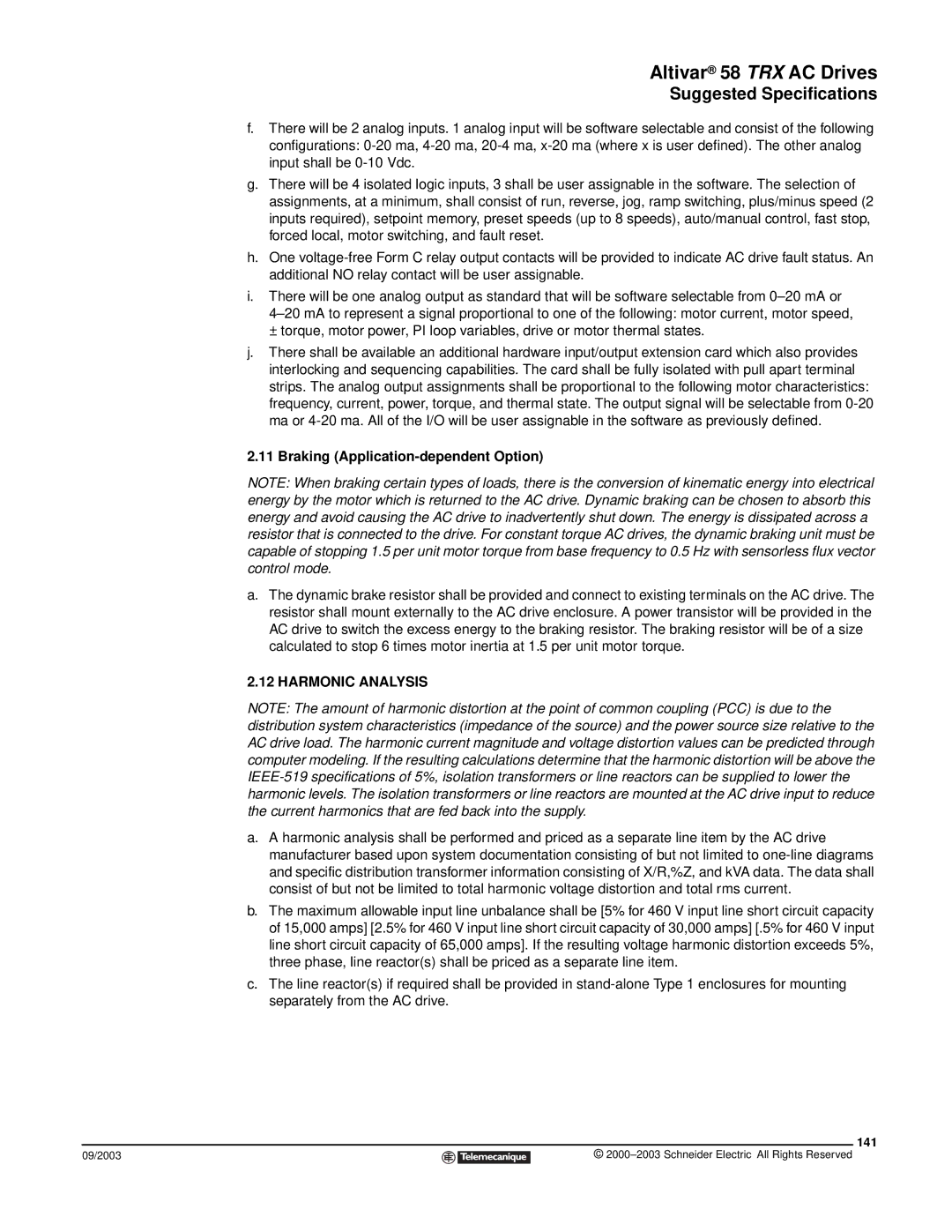Altivar® 58 TRX AC Drives
Suggested Specifications
f.There will be 2 analog inputs. 1 analog input will be software selectable and consist of the following configurations:
g.There will be 4 isolated logic inputs, 3 shall be user assignable in the software. The selection of assignments, at a minimum, shall consist of run, reverse, jog, ramp switching, plus/minus speed (2 inputs required), setpoint memory, preset speeds (up to 8 speeds), auto/manual control, fast stop, forced local, motor switching, and fault reset.
h.One
i.There will be one analog output as standard that will be software selectable from
± torque, motor power, PI loop variables, drive or motor thermal states.
j.There shall be available an additional hardware input/output extension card which also provides interlocking and sequencing capabilities. The card shall be fully isolated with pull apart terminal strips. The analog output assignments shall be proportional to the following motor characteristics: frequency, current, power, torque, and thermal state. The output signal will be selectable from
2.11 Braking (Application-dependent Option)
NOTE: When braking certain types of loads, there is the conversion of kinematic energy into electrical energy by the motor which is returned to the AC drive. Dynamic braking can be chosen to absorb this energy and avoid causing the AC drive to inadvertently shut down. The energy is dissipated across a resistor that is connected to the drive. For constant torque AC drives, the dynamic braking unit must be capable of stopping 1.5 per unit motor torque from base frequency to 0.5 Hz with sensorless flux vector control mode.
a.The dynamic brake resistor shall be provided and connect to existing terminals on the AC drive. The resistor shall mount externally to the AC drive enclosure. A power transistor will be provided in the AC drive to switch the excess energy to the braking resistor. The braking resistor will be of a size calculated to stop 6 times motor inertia at 1.5 per unit motor torque.
2.12 HARMONIC ANALYSIS
NOTE: The amount of harmonic distortion at the point of common coupling (PCC) is due to the distribution system characteristics (impedance of the source) and the power source size relative to the AC drive load. The harmonic current magnitude and voltage distortion values can be predicted through computer modeling. If the resulting calculations determine that the harmonic distortion will be above the
a.A harmonic analysis shall be performed and priced as a separate line item by the AC drive manufacturer based upon system documentation consisting of but not limited to
b.The maximum allowable input line unbalance shall be [5% for 460 V input line short circuit capacity of 15,000 amps] [2.5% for 460 V input line short circuit capacity of 30,000 amps] [.5% for 460 V input line short circuit capacity of 65,000 amps]. If the resulting voltage harmonic distortion exceeds 5%, three phase, line reactor(s) shall be priced as a separate line item.
c.The line reactor(s) if required shall be provided in
141
09/2003 |
| © |
| ||
|
|
|
